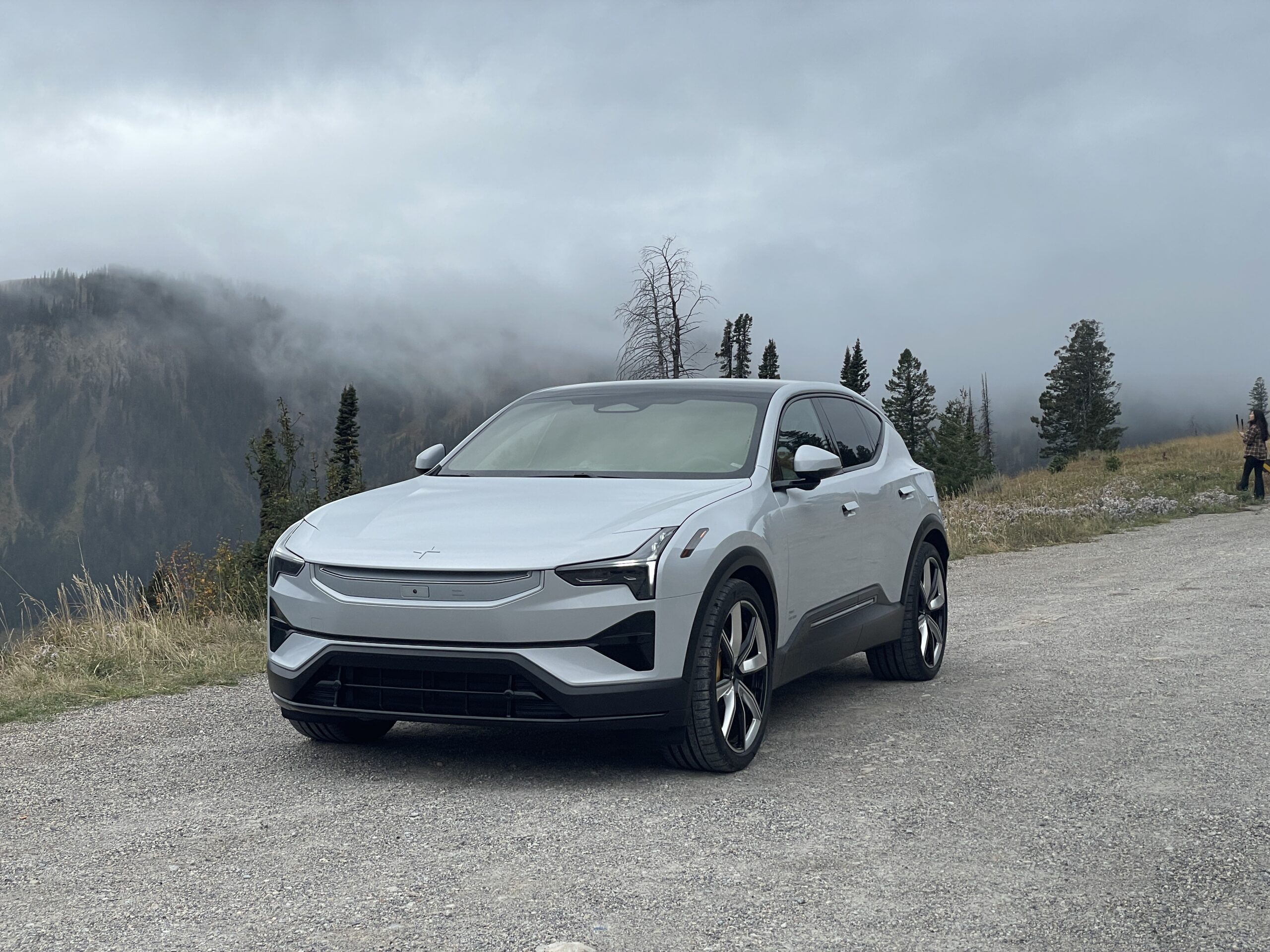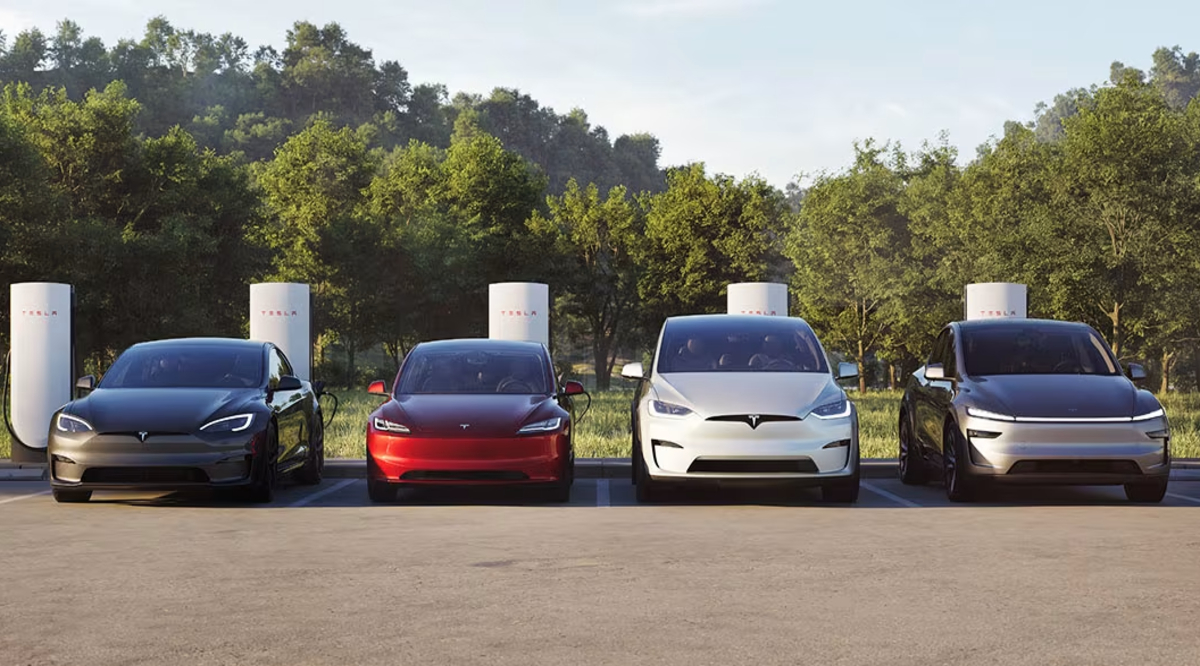Sign up for daily news updates from CleanTechnica on email. Or follow us on Google News!
At the IAA Transportation show in Hannover, Germany, last month, Roger Alm, the president of Volvo ‘Trucks, sat down for an interview with electrive, in which he spoke about the challenges ahead and what lies in store for the future. Currently, Volvo Trucks is the leader in the electric truck sector, with a 51 percent market share in Europe and 40 percent in the US. In the first half of 2024, more than 2,500 electric trucks were delivered in Europe, more than half of them from Volvo Trucks.
The company turned its focus to electric trucks five years ago. When asked whether its early investments have paid off, Alm said proudly, “We started our battery electric production in 2019. Now we have 4,200 battery electric trucks out in commercial operations in 48 countries around the world.” That has allowed Volvo Trucks to position itself as a dominant player in the global market for electric trucks. But the company’s commitment to sustainability goes beyond selling trucks. “We are investing in the future. And we are then scaling up this volume together with our customers to make that business even more sustainable,” Alm said.
His confidence in electric mobility is underscored by the largest launch in Volvo’s history, which is renewing its entire global product range. “We are taking on fuel consumption on combustion engines, reducing it by 10% for conventional trucks and 5-8% for cab over models,” Alm said, highlighting the company’s dual focus on both electric and fuel efficient conventional vehicles. Volvo Trucks is expanding its electric truck lineup from six to eight models, offering a broader portfolio to customers across all segments.
However, scaling up electric trucks presents significant challenges. In Germany, government subsidies for electric trucks have ended, something that has roiled the waters at Volkswagen lately, sparking concerns that the company might actually close one or more factories in Germany for the first time in its history. Alm is pragmatic about the shifting policy support for electric vehicles, however. He recognizes that collaboration across various sectors is crucial. “Of course, everybody needs to come together. It’s about working together in all dimensions to really scale up the volume of battery electric trucks. But we also need the grid of electricity and charging infrastructure.”
Despite these hurdles, Alm remains optimistic about the future. The diverse approach taken by Volvo Trucks includes not only battery electric vehicles but also fuel cell technology and combustion engines that operates on renewable fuels. “We need this wide range of different solutions,” he said, explaining that different technologies are suited to different use cases, such as long-haul transport where battery electric may not be sufficient. To address those concerns, he suggested Volvo Trucks has an upcoming model designed for long-haul routes with a 600 kilometer (360 mile) range. “We are putting in a new e-axle, a new technology into our model range,” he said, “which will mark a significant step towards meeting the demands of long-distance transport, where electric vehicles have traditionally struggled to compete.”
When asked about the future of electric trucking, Alm’s vision was clear. “We are moving forward and will continue to move forward because we would like to create a better world to live in,” he said. Volvo’s leadership in electric trucks is not just about innovation, it is about a long-term commitment to a more sustainable transport system, he said. As for what might be coming next, Alm offered a hint — “Come here [to the IAA Transportation show] in two years, and then we will show you.”
Carbon Pricing
In addition to an emphasis on electric trucks and improving the high-power charging infrastructure they will need to support their operations, Alm had a clear idea of what will be required to bring the EV revolution to a successful conclusion. While subsidies have been beneficial, Alm sees carbon pricing as the next logical step in accelerating the transition to electric trucks. He argues it is the only way to ensure that all players in the industry are competing on a level playing field, and thereby providing the necessary incentive for shifting to low emission vehicles.
In a post by Carbon Credits published by CleanTechnica in March of this year, that organization argued that capitalism isn’t broken, but is not being used correctly in most countries. The basic premise of capitalism is that the price of a good or service reflects basic market forces — supply & demand. But what if the price doesn’t accurately measure the true cost? If the government subsidizes pencils, people will buy more pencils. Subsidies are generally written into law, much like the Biden administration’s Inflation Reduction Act provided subsidies for electric vehicles, solar PV, wind turbines, and energy efficient products. As a result, almost 200,000 new clean energy jobs have been created in the US because market demand for these cleantech products is growing alongside the price reduction.
However, what about subsidies that aren’t written into law? These are called externalities, and they’re the crux of pretty much every problem in the world that has been caused by capitalism. The cost of pollution, including climate changing pollution, is not included in the cost of the products and services we buy. That cost is instead externalized onto society, which has to deal with the consequences.
Putting a price on carbon fixes this broken part of capitalism, at least in terms of climate change. A price on carbon works quite simply. For every ton of carbon emitted by a company, the government adds a tax. The company then has to internalize that cost and pass it on to their customers. Since customers do not like extra costs, it is now in the company’s best interest to try to eliminate that carbon pollution and to reduce the cost of their product.
One of the advantages of putting a price on carbon is it makes it fairly simple to level the playing field between those who do the responsible thing and factor the price of carbon pollution into their products and those who do not. Those non-conforming products pay their carbon tax at the border so that they do not gain a competitive advantage vis a vis domestic manufacturers when they are imported. No messy tariff wars, just a common sense approach to keeping the planet habitable.
The fly in the ointment is that people hate higher prices even if it means preserving the environment that sustains us all. Canada has put a tax on carbon and it is widely despised by much of that country’s inhabitants. That hatred for a sane way to address carbon pollution may be the primary factor in a conservative victory in the next Canadian national election. It is easy to propose a price on carbon, but quite another to make it viable.
We are so accustomed to ignoring carbon emissions and pretending they have no economic consequences that taking a different approach will face a blow torch of opposition. What Alm suggests is entirely rational, reasonable — and necessary — but getting the governments and the people of the world to accept the idea will take so long that most humans will have ceased to exist by the time it gets implemented. In which case, the need for electric trucks from Volvo or anyone else will have long since disappeared.

Have a tip for CleanTechnica? Want to advertise? Want to suggest a guest for our CleanTech Talk podcast? Contact us here.
Latest CleanTechnica.TV Videos
CleanTechnica uses affiliate links. See our policy here.
CleanTechnica’s Comment Policy






